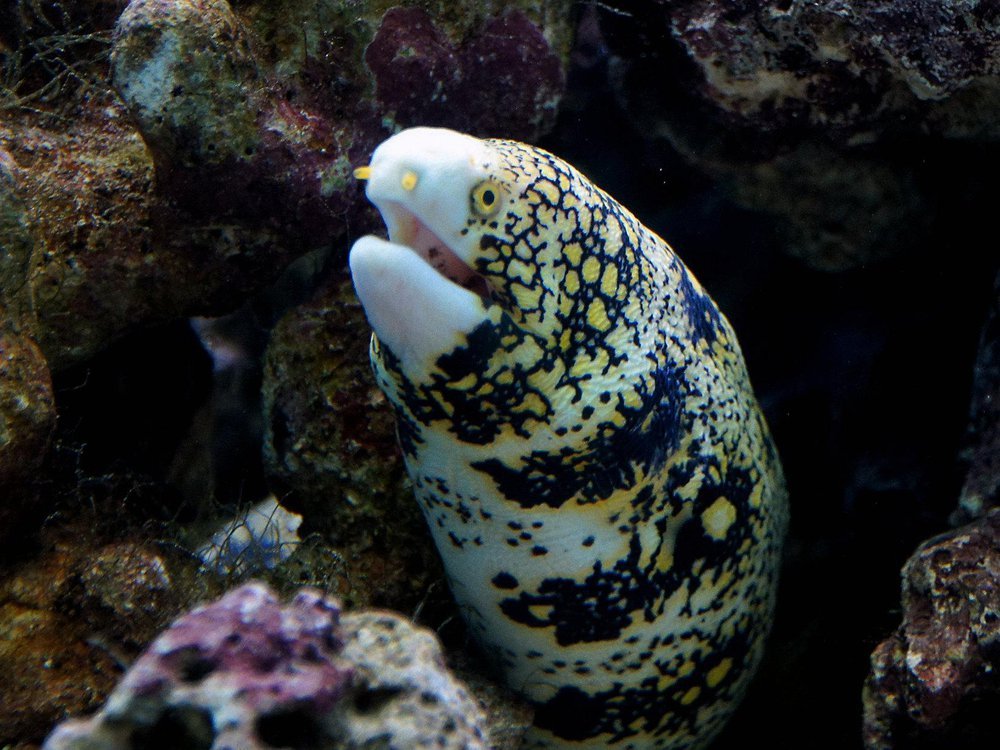Researchers studying moray eels have discovered that these serpentine fishes have a freaky second set of
razor-toothed jaws that help the eels reel in prey, even on land, according to new study published
earlier in the Journal of Experimental Biology.

The oral jaws and the pharyngeal jaws.
Nearly all fish feed underwater, and most predatory fish take advantage of the properties
of their liquid medium by generating intense suction to hoover their favorite prey down thei
r gullet. But this tactic doesn’t work so well on land, and some
moray eels are known for wriggling around out of the water during low tides in search of crabs
and other intertidal delicacies. The study is the first to document how the moray’s special extra
set of jaws swings forward from the back of the eel’s throat to latch onto food and drag it back
towards the stomach without relying on suction like ordinary fish, reports Mindy Weisberger
for Live Science. Study author Rita Mehta, an evolutionary biologist at the University of California
Santa Cruz, tells Live Science that based on what she knew about how these eels use these extra
jaws to pull in food, “it made sense that if morays were able to capture prey in the intertidal or
on land, they could also swallow their prey on the land without relying on water.”
To put this idea to the test, Mehta and her colleagues set up an experiment with a team of specially
trained snowflake moray eels and tempted them with morsels of squid dangled over dry land, reports
Sabrina Imbler for the New York Times. In videos of the experiment, an eel hurls its body up a sandy
ramp and grabs the piece of squid with its visible, standard-looking jaws only to suddenly
slingshot the squid deeper into its mouth with an unseen flick of its second set of chompers, known as pharyngeal jaws.











